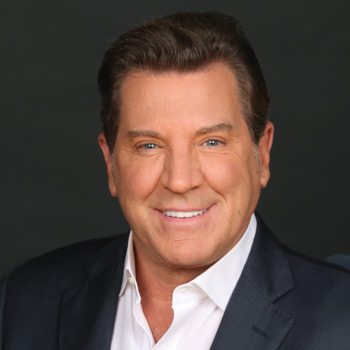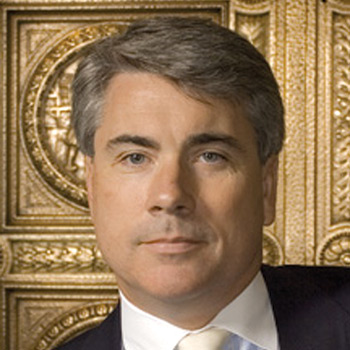Last Wednesday marked the first day of the US summer, though here in NYC it sure doesn’t feel like it, states Jay Pelosky of TPW Advisory.
Temps were running some 15 degrees below normal for this transitional time of year. Some early mornings and late afternoons still feel like Spring, and some lunch walks lead to a sense summer is already upon us.
No surprise where this metaphor goes right? Straight to the markets, which seem to be in transition time themselves...from bear to bull, from rate hike cycle to rate cut cycle, from recession fears… well, back to recession fears, from tech stocks rock to was that a pothole and on to the cyclical vs defensive debate. Bonds price in recession with 100 bp of rate cuts by YE, bonds price out said recession and said rate cuts and now back again. USD strength fades to USD weakness and back. Commodities—well it’s been pretty much all recession though gold continues to catch the occasional bid.
We know if it was easy everyone would do it as we saw back in 2020; it’s not simple, it’s not for everyone, and on occasion one wonders whether it is for her or him. As we wrote about a month or so ago on patience, one had to be patient for the rally ahead and now patient in enduring the “healthy” pullback, aka the first down week in the past six. After all, trees don’t grow to the sky, do they?
We continue to see brighter days ahead both in economies and risk assets, especially global equity. After a 15% run-up in the first half (best start in 25 years) a pullback makes all the sense in the world and some jarring inflation #s in the UK, an insignificant market in the global scheme of things, is enough to produce fears of more inflation elsewhere, providing a good rationale for some profit taking.
We reviewed some of the broad equity index charts to see where we are and two things stood out: one, the pullback has been modest to date (2-3% for ACWI and ACWX) and second, the overbought and near overbought conditions of a week or two ago have dissipated. Narrowing in a bit, EU growth stocks have been hit more aggressively while US growth (IUSG) remains strong. Copper stocks have given back much of their one-month gain as the green shoots of global growth are questioned.
European growth data has been soft while inflation, still too high, has come off sharply from peak levels much as it has in the US. Today’s flash EU Composite PMI at 50.3 was below forecast and is a bit worrisome just after MS reported its EU Cyclicals/Defensives basket had risen for six straight weeks, the best run in over a decade. Japan remains happy with some inflation as it exits decades of deflation while China would also like some inflation. The lack thereof does provide China the opportunity to cut rates and it has been doing just that. We expect China and Lat Am to lead an EM rate-cutting cycle that we expect to dominate the 2H of the year and 2024. As we said, the transition time.
As we have noted, the S&P Global Composite PMI Index reached an 18-month high last month while the Bloomberg US ESI sits at a two-year high. We continue to expect global manufacturing to catch UP to Services rather than Services to catch DOWN to Manuf. Global green shoots include the first Y/Y increase in S Korean exports since last August with the first twenty days of June X up 5%.
In the US, recent Philly Fed and Empire State surveys showed big jumps in their expectations for future activity levels.
Furthermore, US housing has bottomed (new home sales + 10% Y/Y, May housing starts up 21% M/M, while multifamily starts outpace single family by the most since the 1970s!), consumer sentiment is up (UM consumer confidence up 28% Y/Y) while one-year forward inflation expectations are down. Inflation’s fall means real consumer income growth is up 2.5% Y/Y. The Atlanta Fed Q2 GDP nowcast is close to 2% with both housing and inventories expected to add to GDP growth. With real US rates strongly positive, we expect June US headline CPI to be well under 4%, keeping the Fed on hold, in sharp contrast to FFF pricing in close to 75% odds of a July rate hike.
More importantly, earnings revisions and forward estimates are inflecting higher and that is what drives stocks. This is true both in the US and globally. FactSet reports Q1 US earnings season has resulted in a 3% pick up in the year ahead EPS estimates to $232 while the full year 2023 EPS estimates are now forecast to rise 2% to a record $220. Cross-asset volatility has collapsed which tends to lead to higher-risk asset returns. Add in a 2H, EM-led, rate-cutting cycle and the risk asset outlook seems bright and sunny.
As such, we continue to tread our middle path between high inflation and deep recession, especially as we start to transition our focus from 2023 into 2024. Old Wall Street hands know that once analysts come back from summer vacation the focus shifts to the out year—yet another transition.
The multiyear outlook seems clearer than the near term, even for us. Several new major shifts: DM Central Bank's acceptance of a higher inflation path (think 3% rather than 2%), the Biden Doctrine’s centerpiece, New Industrial Policy, Europe’s Fit for 55 and Green Industrial New Deal, Japan’s exit from Yield Curve Control ( YCC) and China’s shift to domestic demand-led growth all suggest to us a much brighter future than many have penciled in.
We couple this with our expectation for a global cap ex boom to flesh out our defenses against the three Cs of Covid, Climate, and Conflict, augmented by the kickoff of a new AI-inspired Innovation Cycle to suggest our long-held view that the correct analog for what’s coming next is the second H of the 1990s in the US, namely the 1995-1999 period of higher for longer rates, high growth, moderate inflation, and strong risk asset returns, remains intact.
Thus, we remain risk asset focused in our Global Multi-Asset (GMA) model employing our barbell strategies: Tech and Cyclicals in our US equity sleeve, US and non-US equity in our global equity sleeve (we note AQR sees EM equity relative valuations at cheapest level since 2000), US HY and EM local currency debt within FI and gold, copper, oil threesome in the commodity space. Oil price action is transition emblematic; falling even as demand forecasts pick up with US crude demand at its highest since December while the IEA forecasts tighter supply–demand dynamics in the 2H. Commodities remain the main sore thumb not confirming our positive global growth view.
Within our TPW 20 thematic model, the barbell remains Future Tech and Climate centric as future tech gets a boost from the AI cycle while Climate focus benefits from the transition away from the Covid-inspired inflation spike and monetary policy response to what comes next. Both are coming off 12-18 month basing periods.
June risk asset performance started like a house fire and is now limping to the finish...transitioning to what? A brisk walking pace, perhaps an e-bike ride through NYC pace. Time will tell. A trillion-dollar short position in US equity (largest in well over a year) shows the level of pessimism towards the YTD advance and in our view supports a healthy, BTFD mentality.
There are five reasons why the US will avoid recession: anchored inflation expectations, low oil prices, excess savings, light debt loads, and labor hoarding.



















